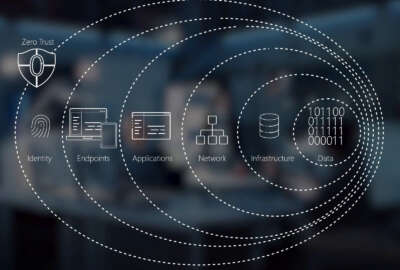Army testing approach to ease communication with allies
Col. Heath Giesecke, the director of the Army’s Enterprise Cloud Management Agency, said a cloud-based commercial app is helping close a communication gap.
The Army is trying to fix a common communication breakdown.
Using a commercial product, the Army’s is testing an alternative chat and collaboration platform specifically for DoD and its allies.
Col. Heath Giesecke, the director of the Enterprise Cloud Management Agency for the Army, said the pilot with the tool from Wickr started over the summer and in collaboration with XVIII Corps, who were looking to get a chat application that could better fit their mission needs of integrating soldiers and external third party, foreign military or local personnel in various mission sets.
“Initially, we started with just a few staff members of 10th Mountain and the XVIII Corps. Then we expanded a little bit more as we got our footing just to explore how do we set up the app? How do we authenticate it? How can we secure it for the Army side? Then how can we put our control measures in place to integrate it with a commercial or an external, non-DoD individual?” Giesecke said an interview after speaking on a recent pane sponsored by AFCEA DC. “The driver is really DoD policy about third party chat apps. Soldiers will always find a way and the tactical units will find a way to collaborate and to accomplish their mission, whatever that looks like, anything from disaster response to a training mission or a kinetic operation, and partner with a coalition force. So we looked at that app as a way to fill a gap because there’s clearly a gap.”
The Army, through tools like Microsoft Teams and Office 365, has made it easier to communicate internally, but once in a tactical environment, units had little option to connect with allies and partners.
Army’s pilot going well
Giesecke said by using a commercial product, integration with identity and access control systems and connecting to the cloud for infrastructure reduces complexity without losing any security rigor.
“They can control and I can delegate it. They can set up a few roles, and they can approve their own users based on cost, license and whatever they want to expend,” he said. “They can stand up, turn down, and then it puts the ability for them to control their burn rate based on mission very flexibly.”
The Army has run the pilot for about six months or more with about 150 or so users.
Giesecke said the next step is to figure out how to take this from pilot to production through a reimbursable model approach.
“How can we put out a price card so units can know what it’s going to cost them, or even a headquarters can know what it’s going to cost them to subscribe, and they can make their business case for it,” he said.
Giesecke, who took over for Paul Puckett in running the ECMA over the summer, said the communication and collaboration pilot is one of several ongoing priorities for his organization.
ECMA is analyzing how best to use cloud landing zones, looking to better align and simplify access to the assortment of cloud services across the Army and implementing a host of new policies around security and DevSecOps that Leo Garciga, the Army’s chief information officer, signed out over the last several months.
A cloud landing zone is an area inside a cloud environment that allows the user and the service provider to set a framework for policy or allowed services to make it easier to separate provider services.
Cloud landing zones
For example, Giesecke said, ECMA has about 20 or so common services in one cloud offering that they can set their security parameter and control things like traffic flow. The Army would set up separate landing zones for each cloud instance, AWS, Azure and others.
“You can control how the virtual network connections all go up to a security stack. You can also infinitely control what you see, or maybe data that you pass over to security layer or an audit layer for investigation,” he said. “So it’s really advantageous to put as many of your tenants under a common landing zone based on the cloud because it allows you the service provider to control and see what’s happening in that cloud.”
The technology and idea of a cloud landing zone aren’t new concepts. But it’s something more organizations, including the Army, are considering as a way to better manage cloud instances.
The Army currently has two landing zones at Impact Level 4 and 5 through its cArmy platform.
Giesecke said the Army will focus its initial efforts on business systems and mission areas, but its longer-term goal is to centralize cloud services for major commands across the service as it redesigns and innovates in the landing zones.
Giesecke said the challenge, like with most technologies, is getting people trained and familiar with the concept.
“It is something that organizations mature into as they expand their presence in the cloud, or they figure out how they want to operate inside the cloud,” he said. “When they look to centralize offerings, a way to control expense through those offerings, or a way to control security parameters, they will move to the idea of operating their own landing zone.”
Giesecke said it’s a busy time at ECMA with so much change coming from both policy and programmatic perspectives.
“We’re in mass change right now. We’re rolling over contracts. We’re reevaluating our landing zone constructions for all our domains. We’re looking at consistently looking at software-as-a-service offerings and making sure artificial intelligence and large language models offerings are integrated across the CIO and our cyber workforce,” he said. “We are excited about the future, and there’s nothing but good things ahead.”
Copyright © 2025 Federal News Network. All rights reserved. This website is not intended for users located within the European Economic Area.
Jason Miller is executive editor of Federal News Network and directs news coverage on the people, policy and programs of the federal government.
Follow @jmillerWFED







